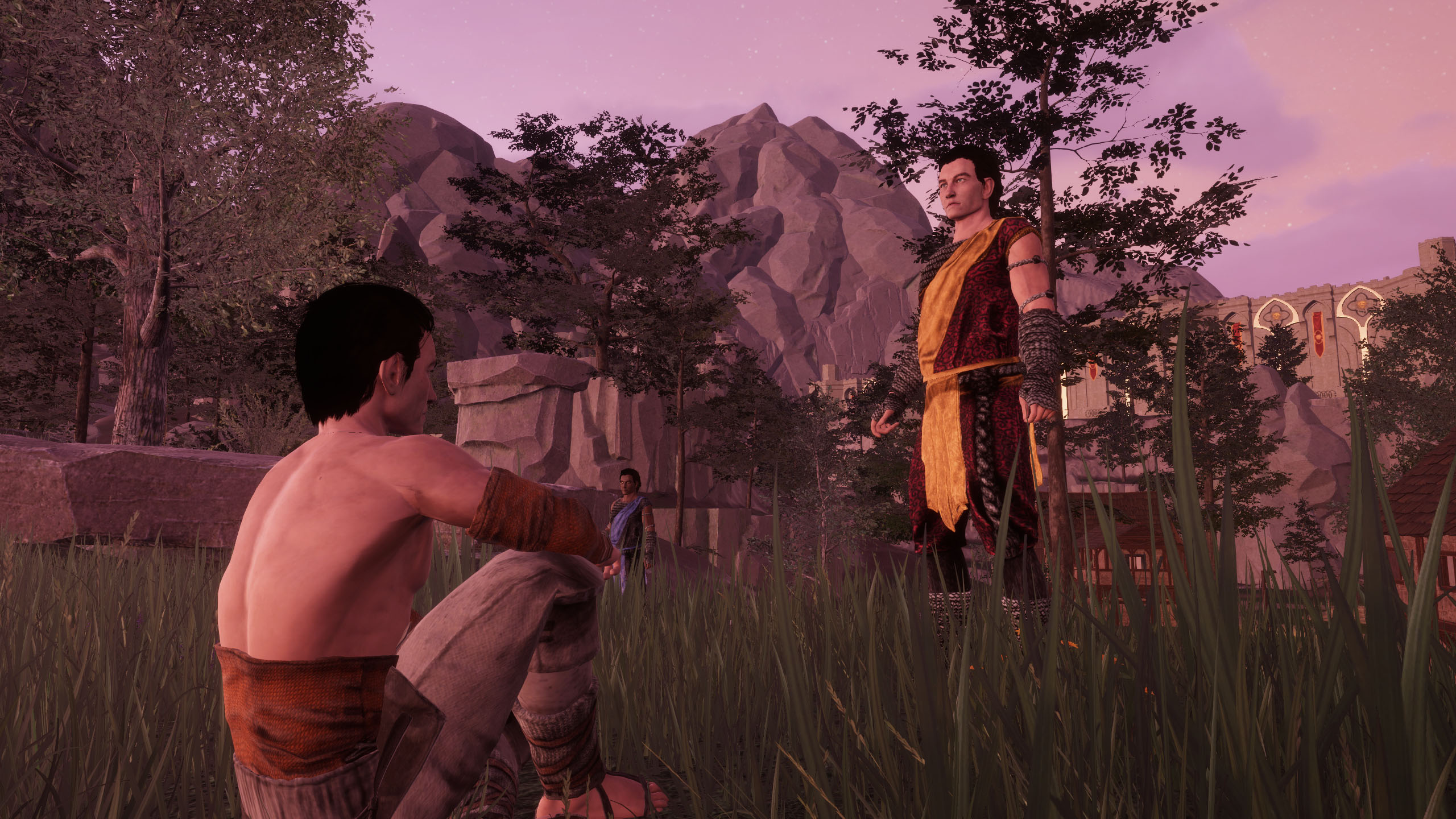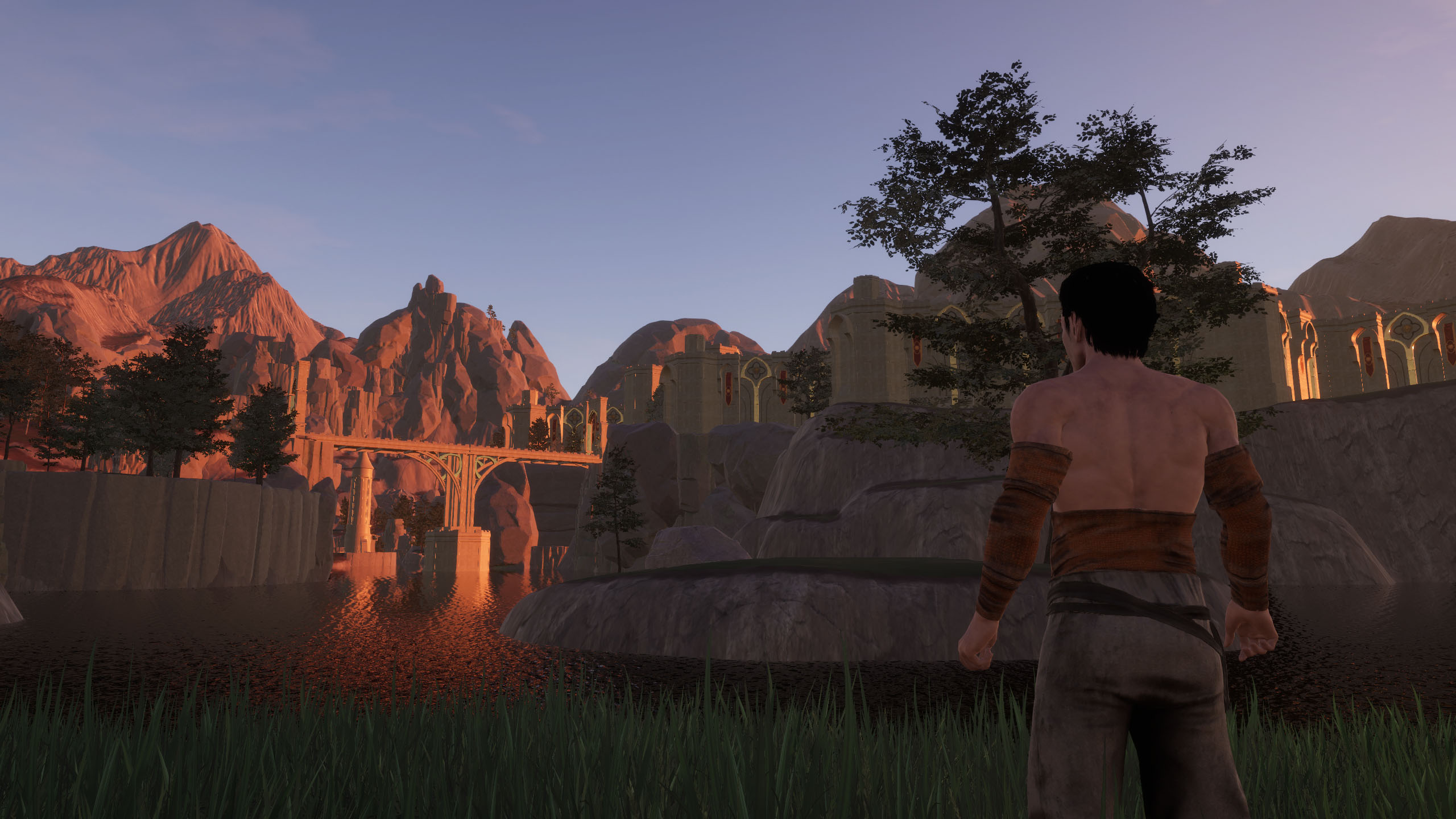The Early Monk Experience
In the development of Pantheon, a key component to our design is to ensure that every moment of being in Terminus is meaningful. This is highlighted by our drive to make leveling a more meaningful journey, than the current trend we see in the genre. For us, we do not want a game where the “end game” is the real start of the game. While many different systems contribute to building a meaningful journey, class play is at the heart of meaningful play and player growth.
We will be looking at the early experiences of our classes over a series of articles. We will discuss what it means to take on your favorite archetype and how it feels to enter the world as a fledgling, looking to gain unsurmountable power. We started by discussing the early experience for the Wizard in our February Newsletter, next up on the agenda is Pantheon’s Monk, the embodiment of balance and serenity.
To begin with, tell everyone a bit about the core fundamental vision of the type of class role a monk will play and its standing in that role in comparison to other classes at this time. Also, as we recently discussed the wizard, what are some differences that go into design goals, particularly in regards to output of damage?
We really want to emphasize the class fantasy of the Monk as a master of the martial arts. Many Monk abilities are themed around riding the ebb and flow of a battle and making conscientious decisions about when and why to use certain cooldowns, or to attack from a certain position. Even among their earliest abilities Monks have some very potent cooldowns and combos that can change the outcome of a single fight, but that potency comes from situational value. Blowing a cooldown just because it’s available typically won’t provide much advantage, and it’s here that the gulf between a mediocre Monk and a masterful one will be most evident.
One hot topic of debate since the monk was originally shown in streams was the output of damage vs tanking ability, as they are defined as an “off-tank.” Where is the monk now in terms of DPS and what adjustments needed to be made to get it to where it feels right?
Overall the Monk’s early kit has been re-tuned from its original implementation to be more damage-oriented, while still providing a few tools and tricks useful for off-tanking and survivability. Because off-tanking is a slightly more advanced tactic however, we’re okay leaving some of the abilities that better facilitate that for slightly higher levels.

Speaking more to the off-tank capabilities of the monk, how heavily can a player flex into this role? Could a monk tank for a group just farming experience? Could a monk foreseeably “tank” a boss?
However, between all the potential variables that exist between enemy traits and abilities and group composition, I wouldn’t put it past some enterprising players to find ways for the Monk to shine as a tank in ways we aren’t anticipating.
What will the monk’s level 1 starting ability set look like?
With the addition of Techniques however, Monks that come into possession of a staff weapon will be able to access the starting Staff Technique, Strike. While our starting techniques tend to adhere to similar patterns in terms of cost and damage output, differences in staff damage and the rate at which it generates Readiness will create some variance in the level 1 experience from a Monk that chooses to remain focused on hand-to-hand combat.
In the current design of the level 1-10 experience, what are the goals of a monk’s growth from a gameplay standpoint, and what will players feel during these levels?
The difference between choosing to fight unarmed or with a staff becomes more apparent as additional Techniques become available as well. Hand-to-Hand is viewed as the primary ‘damage dealing’ weapon of choice for Monks, and most Hand-to-Hand techniques are oriented towards raw damage output, resource replenishment, or specific support actions like a stun.
The staff on the other hand will be of interest to Monks seeking to fulfill a more supportive role, as their ability to create and capitalize on states and help control enemy positioning will make them invaluable to a well-coordinated team.
It has been stated that some classes may be able to solo better than others. Where would you project the monk’s ability to solo in early levels of play? How will their available skillset play into soloing, both positively and perhaps as a hindrance?

Can you give us a glimpse of philosophical design goals for what a player can expect from ability growth when comparing 1-10 and the rest of their leveling journey?
Like the Wizard – and small bean drop but I may as well confirm right now that this is being applied to every class – level 10 acts as something of a milestone in the Monk’s journey. In their case, we unlock the first of five Chakra Gates, and give Monks a new lens through which to view and apply the abilities they’ve acquired thus far.
From there, the additions to the Monk kit become more specialized. We continue to view the level 10-20 range as the primary pool of more group-centric oriented abilities, and Monks can expect to receive additional abilities suited to fulfilling pulling and off-tanking responsibilities in this range.
Much of the Monk’s latter growth is centered around the specific functions of the Chakra Gates and how they interact with other abilities in the Monk kit. Our goal is to provide Monks with the tools to build upon each pivotal moment in combat towards an ultimate conclusion.
Finally, for all the monks looking to flex their muscle in Terminus, what exciting or perhaps unknown element of their tool kit can they look forward to which helps further define their class?
In its new incarnation, Chakra Gates are now temporary stances that players will unlock over the course of their adventures. When a Chakra Gate is open, it will provide both a passive benefit to the monk, as well as unique effects for certain abilities – and in some cases, even drive abilities to different combos depending on the active gate.
We hope you enjoyed this small look into the early gameplay goals for the Monk. We are excited to reveal more details about all of your favorite classes in the months to come.
| Producer’s Letter | Monthly Recap | The Early Monk Experience | Verified Human |
|---|